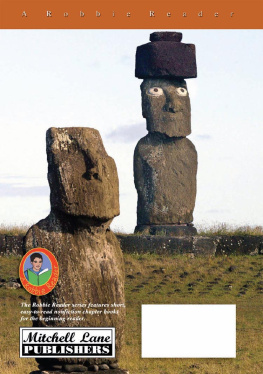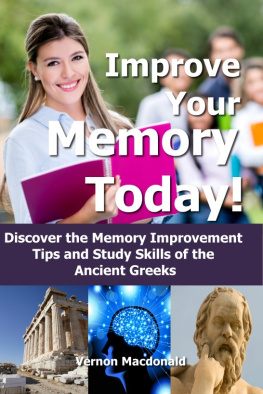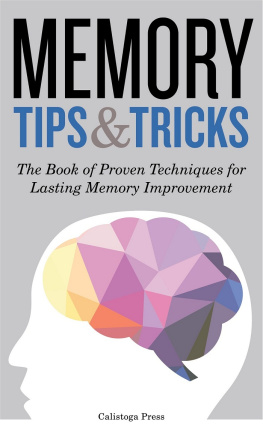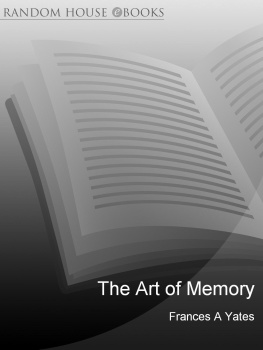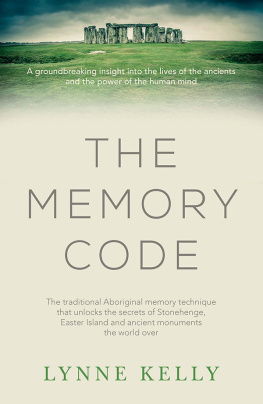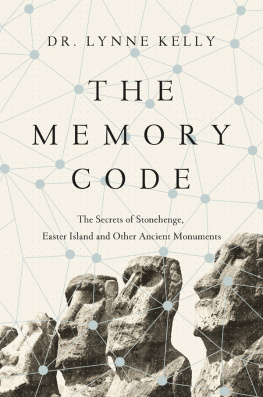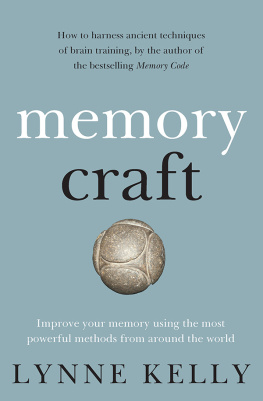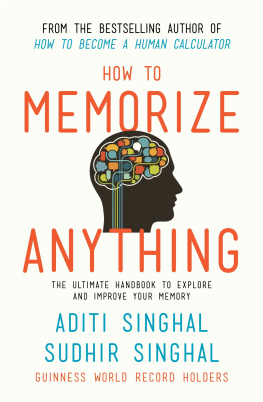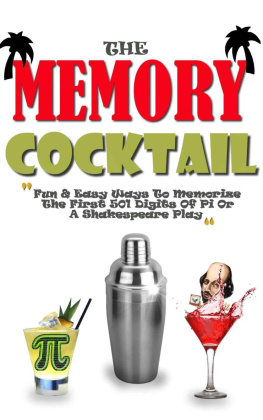Praise for The Memory Code
As we rediscover the extraordinary endurance of the oral memories of people who do not depend on writing, and as we begin to rediscover that many of those memories include knowledge of distant times, Lynne Kelly has explored how vast, non-written memory systems can work. She explores the notion that memories were or are encoded in spaces that can be marked by natural or built elements and applies that exploration to some of the remarkable physical monuments of the last ten thousand years. She takes the reader on a fascinating journey into the past and around the world and into the minds of people who would not need to publish a book like this. They already knew it. An engaging and exciting read.
Iain Davidson, Emeritus Professor, University of New England
Dr Kelly has developed an intriguing and highly original account of the purpose of Stonehenge, Avebury and other stone monuments. The depth and breadth of her research, and the experimental experience she has brought to her study, command respect and invite serious attention.
Dr Rosamund Cleal, Museum Curator, Alexander Keiller Museum, Avebury, and co-author of Stonehenge in its Landscape
An astonishing journey into the memory of the world.
Associate Professor Grace Karskens, University of NSW, author of The Colony
In this insightful book, Kelly takes us on a tour of major archaeological sites and gives us fresh eyes to see how non-literate societies used the landscape, monuments, buildings, spatial arrangements, artefacts, and even sounds as memory spaces to encode and transmit detailed information.
William Lipe, Professor Emeritus, Washington State University
Dr Lynne Kelly provides an elegant, rational and compelling thesis on memory as a pre-historic survival tool.
Dominic OBrien, eight times World Memory Champion
Lynne Kelly takes us on a journey to famous archaeological sites around the world, from Stonehenge to Easter Island, to reveal her groundbreaking ideas about how ancient oral cultures encoded knowledge in stone monuments and sacred spaces.
Dr Duane W. Hamacher, Senior DECRA Fellow in Indigenous Astronomy, Monash Indigenous Centre
Lynne Kelly has struck upon a unique approach by which to evaluate the transmission of complex information in non-literate societies and cultures around the world. The Memory Code is a landmark treatise.
Larry Baker, archaeologist and Executive Director, Salmon Ruins, New Mexico
Lynne Kellys remarkable insight into how ancient peoples retained their vast repositories of knowledge by encoding information in the very world around them is matched by her infectious enthusiasm for the subject and a gift for storytelling.
Dr Tim Dean, Science and Technology Editor at The Conversation
This is a timeless masterpiece in ancient oralities, it is a must-read for anyone interested in information technologies, ancient or modern.
Associate Professor Sarina Chen, Department of Communication Studies, University of Northern Iowa
First published in 2016
Copyright Lynne Kelly 2016
All rights reserved. No part of this book may be reproduced or transmitted in any form or by any means, electronic or mechanical, including photocopying, recording or by any information storage and retrieval system, without prior permission in writing from the publisher. The Australian Copyright Act 1968 (the Act) allows a maximum of one chapter or 10 per cent of this book, whichever is the greater, to be photocopied by any educational institution for its educational purposes provided that the educational institution (or body that administers it) has given a remuneration notice to the Copyright Agency (Australia) under the Act.

This book is supported by the Victorian Government through Creative Victoria.
Allen & Unwin
83 Alexander Street
Crows Nest NSW 2065
Australia
Phone: (61 2) 8425 0100
Email:
Web: www.allenandunwin.com
Cataloguing-in-Publication details are available from the National Library of Australia
www.trove.nla.gov.au
ISBN 9781760291327
eISBN 9781952534287
Maps by Lynne Kelly
Typeset by Midland Typesetters, Australia
Cover design: Philip Campbell Design
Front cover photo: Stonehenge (iStockphoto)
Back cover photo: The author walking along West Kennet Avenue, Avebury, UK (Damian Kelly)
For Damian Kelly,
Leah, Abigail and Rebecca Heitbaum
Other books by Lynne Kelly
Knowledge and Power in Prehistoric Societies
Spiders: Learning to love them
Crocodile: Evolutions greatest survivor
The Skeptics Guide to the Paranormal
Co-authored
Exploring Chaos and Fractals
CONTENTS


I had no idea that indigenous animal stories from around the world would lead me to a new theory for Stonehenge. I had a PhD scholarship as a science writer and was looking forward to three years of gentle research leading to a natural history book about animal behaviour and indigenous stories. Eight tumultuous years later and that book is now in your hands, bearing only scant resemblance to the confident outline that started my journey.
It was only weeks into the PhD in the English program at La Trobe University that I glimpsed the complexity of Australian Aboriginal elders knowledge, the first group of cultures I explored in depth. They memorised a vast amount of information about animals, their identification and behaviour, habitats and uses. A huge number of species of birds, mammals, reptiles and invertebrates were accurately described in stories, even when they had no apparent practical use. I realised that the elders could identify all the animals across a wide landscape, when I was struggling with just the birds in my local area. I had a field guide; they had only memory.
I started asking the question which soon became an obsession: how could they remember so much stuff?
At our second meeting, my PhD supervisor, Professor Sue Martin, named a list of suggested resources, casually adding and it might be worth looking at Ong on morality. I dutifully wrote down Ong and morality, wondering if it was something about my ethics that was giving her concern. I found Ongs book in the library. The title was Orality and Literacy.
Orality, I soon discovered, was about making knowledge memorable. It was about using song, story, dance and mythology to help retain vast stores of factual information when the culture had no recourse to writing. It was the first step to understanding how they could remember so much stuff. The definition of stuff was growing rapidly to include not only the animal knowledge I was researching, but also the names and uses of plants; resource access and land management; laws and ethics; geology and astronomy; genealogies, to ensure they knew their rights and relatives; navigation, to ensure they could travel long distances when there were no roads or maps; ideas about where they had come from; and, of course, what they believed. Indigenous cultures memorised everything on which their survivalphysically and culturallydepended.



